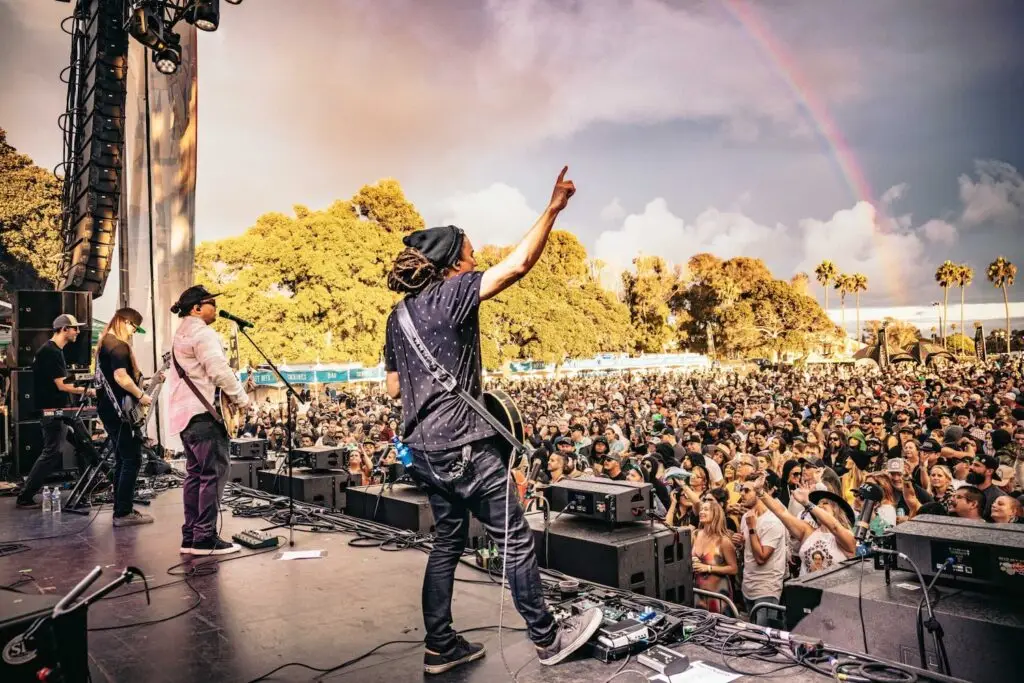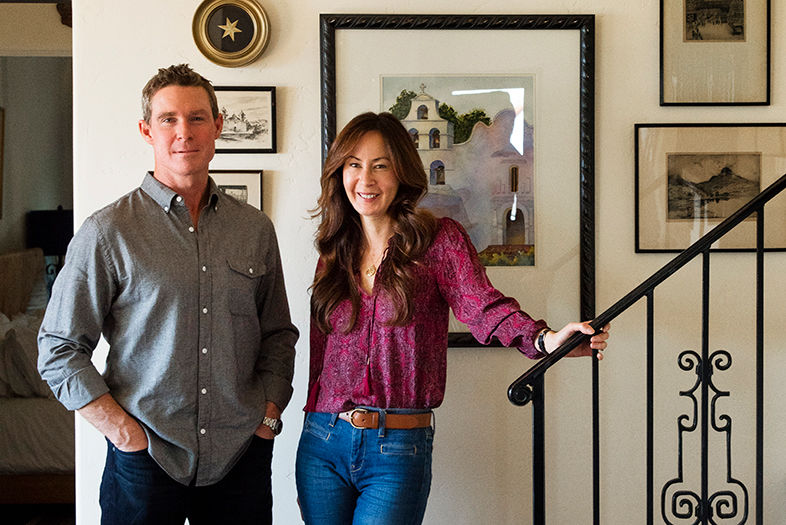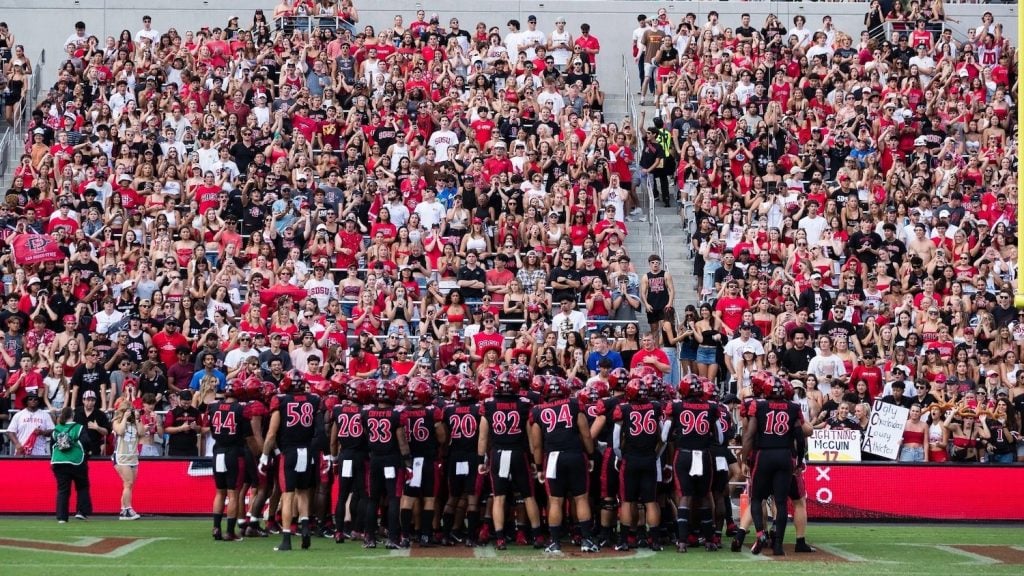
Women Firsts in San Diego
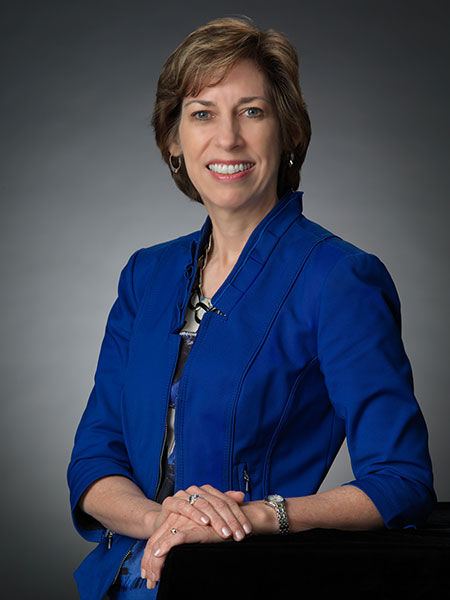
Women Firsts in San Diego
Bill Stafford – NASA – JSC
Ellen Ochoa
First Hispanic woman in space
How many women alive today can say there’s a school named after them—let alone six? Yet children around the US are attending classes at places like Ellen Ochoa Elementary (Tulsa, Oklahoma) and Ellen Ochoa Middle School (Pasco, Washington).
Ellen Ochoa was 11 years old when astronauts first landed on the moon. “It was thrilling,” she says. “But women weren’t allowed to be astronauts at the time. I don’t think I had enough of an imagination to realize that would be a possibility in the future.” Not even after she graduated from Grossmont High School or went to San Diego State University did she dream of it. At SDSU she considered majoring in music or business. But she excelled in math, which led her to physics. Ochoa went on to get a PhD in electrical engineering from Stanford.
In 1990, she was one of five women NASA selected to go to space. (In the last two astronaut classes at NASA, one was fifty percent women, the other close to fifty.) “I wasn’t actually scared at all, other than wanting to make sure I was doing a good job. You’re very busy during these flights, going from one procedure to the next, and they require 100 percent of your concentration.” In fact, the missions require so much focus and mental energy that the luxury to take it all in doesn’t come until bedtime. “That was an amazing time, because you just had the opportunity to look at the Earth as you were going around. That’s always astronauts’ favorite activity that they just don’t get tired of doing.”
Ochoa has flown on four missions, totaling about 978 hours or 41 days. On the first two she studied the Earth’s atmosphere and the hole in the ozone layer; she also deployed and retrieved research satellites. On the third and fourth missions, she served as the flight engineer. “I worked closely with the commander and pilot during the dynamic phases of the flight, like launch, rendezvous, undocking, and landing.” She helped assemble the International Space Station, transferring supplies, attaching a 42-foot-long piece of the truss structure, and supporting space walks. By her third flight, she had a one-year-old at home; by her fourth, two toddlers.
Ochoa saw some women at NASA in the early days of her 30-year career there, but not in leadership roles. Eventually that changed, and she went on to become the 11th director of the Johnson Space Center in Houston—the first Hispanic director and second female director. “You want to hire a diverse group of people and make sure you’re seeing them throughout the entire organization. It’s not only the right thing to do, but, for NASA, it really affects safety as well because we need everybody to feel like they’re going to be valued, like they’re going to be heard.”
Currently living in Idaho, Ochoa travels the country for speaking engagements and board meetings. She’s the vice chair of the National Science Board, which sets the policy for the National Science Foundation; she sits on corporate boards in New York and Texas, and a family foundation board in California.
“We don’t have enough women yet in science and engineering fields. I would say we need your brains. We want you and need you in these kinds of fields.” —Erin Meanley Glenny
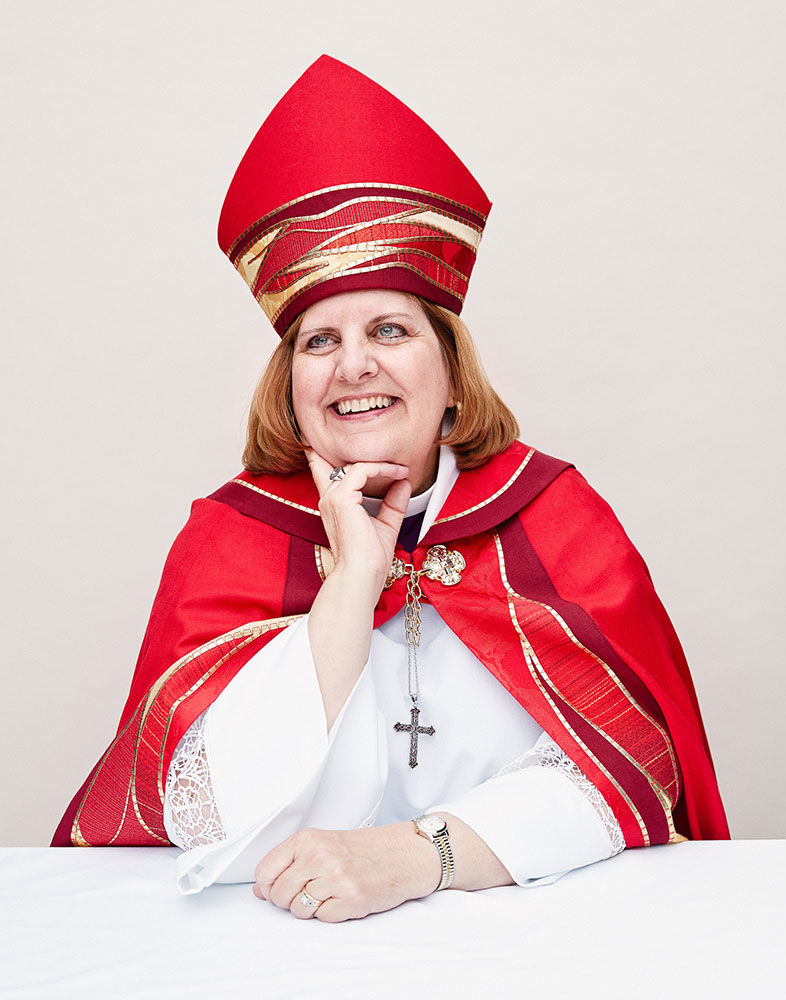
Women Firsts in San Diego
Photo by Nate Hoffman
Susan Brown Snook
First female bishop of the Episcopal Diocese of San Diego
When Susan Brown Snook first graduated from college, she never would’ve predicted that her résumé would one day include the titles “reverend” and “bishop.” She earned a bachelor’s in managerial studies and later an MBA in accounting from Rice University, and spent 10 years working as a certified public accountant.
But something shifted in her when she moved from Houston to Phoenix with her family. She’d just had her second child and decided not to return to work right away, and she started volunteering at a local Episcopal church. She’d been successful as a CPA, “but toward the end of that time, I started to feel that there was something missing, a deeper meaning and purpose to life,” Brown Snook says.
Through that volunteer work, she found the purpose and meaning she’d been looking for and became her church’s director of Christian education. Two years later, the Episcopal bishop of Arizona sent her to seminary, where she earned a master’s in divinity. After becoming an ordained priest, Brown Snook served in the dioceses of Arizona and Oklahoma for 11 years, before being elected bishop of the diocese of San Diego. She was ordained and consecrated as bishop at St. Paul’s Episcopal Cathedral in Bankers Hill this June.
“It feels somewhat improbable. Fifteen years ago, San Diego was known as a very conservative diocese, which ordained very few women as priests. Now they’ve elected a woman bishop.” Brown Snook is the first woman to lead the church in San Diego in its 45-year history. The diocese makes up 15,000 church members across 43 congregations in Southern California. —Marie Tutko
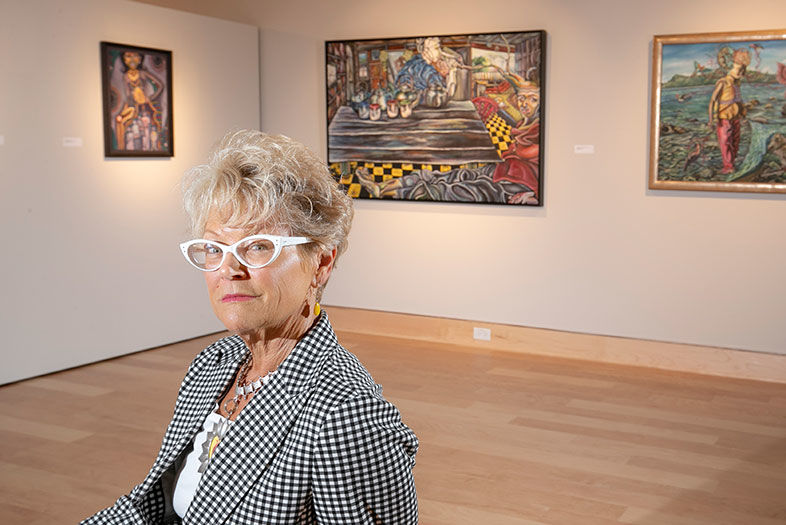
Women Firsts in San Diego
Photo by Ben Krain
Pierrette Van Cleve
First woman to own an online business
These days, there are countless ways to purchase fine art online. But in 1994 there was only one: Art Cellar Exchange. “It was only two pages when it was launched, but that was a revolution in 1994,” says Pierrette Van Cleve, the founder and president.
An early adopter of technology (she worked on a 45-pound Zenith “laptop” in the ’80s), Van Cleve had a life-changing experience at a conference called Cyberfest in 1989. At the time, she was the owner of a newsprint magazine called Art Cellar Exchange, where collectors could buy and sell fine art. While attending Cyberfest, she learned about “this new thing called the internet” and met pioneers in the field. A few years later, the connections she made there paid off when the groundbreaking digital artist Donna Cox and the developers of Mac Web asked if they could design a website for Art Cellar Exchange as a prototype to showcase their new graphic capabilities. Van Cleve said yes, and artcellarex.com was born. (“That was the maximum length of characters you could have in a URL.”)
It worked. “Our first month, we sold a $60,000 work of art to a tech guy in Germany,” she says. “The game was on.” Two years later, the website was such a hit they dropped the print edition entirely. —Angela Ashman
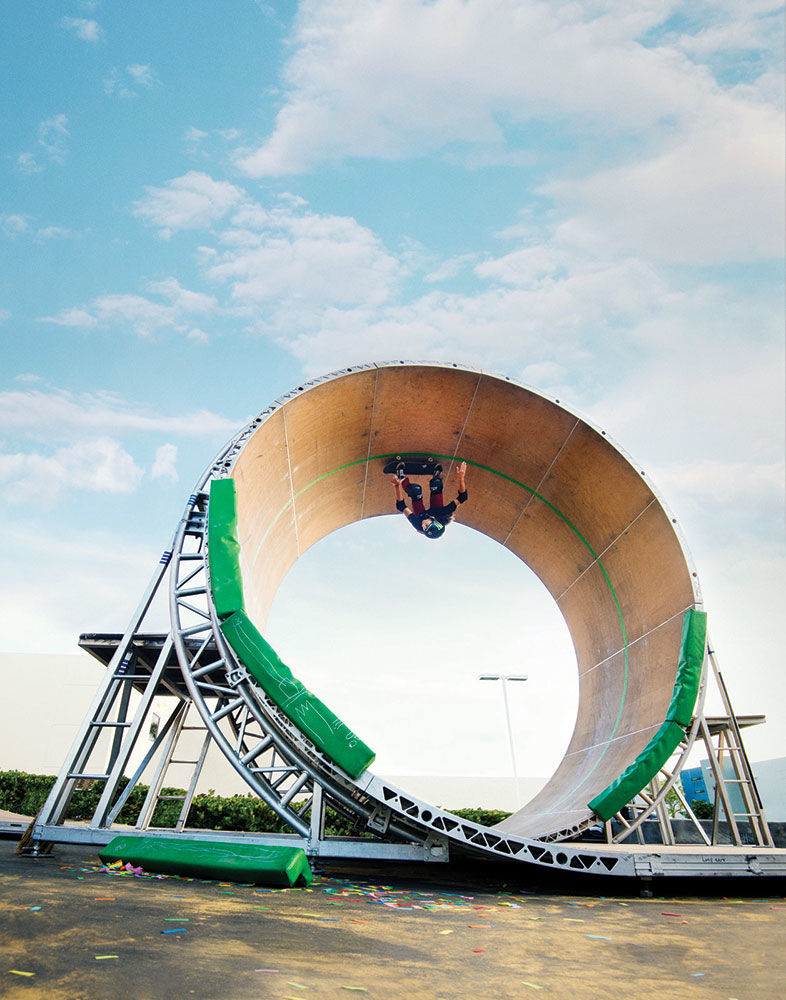
Women Firsts in San Diego
Photo courtesy of Vans
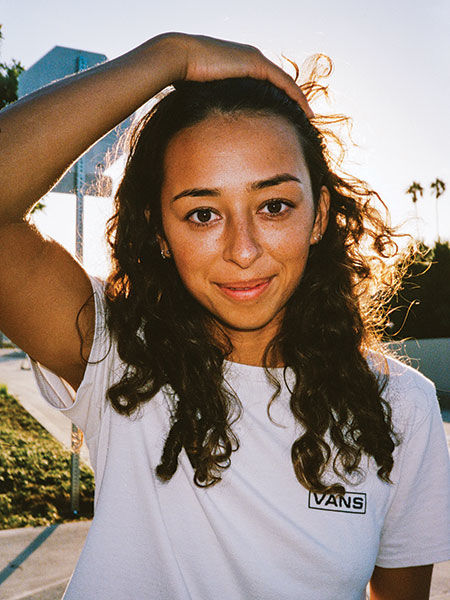
Women Firsts in San Diego
Anthony Acosta
Lizzie Armanto
First female skateboarder to complete Tony Hawk’s “Loop”
The 26-year-old Oceanside resident was the first woman ever to grace the covers of both TransWorld Skateboarding and Thrasher magazine, in 2016 and 2017 respectively, but those photo shoots are peanuts compared to her accomplishment last year: becoming the first woman to successfully complete Tony Hawk’s dangerous vertical loop.
The challenge starts with a launch ramp that propels a skater into a 360-degree loop with a short exit track. In order to not fall and risk serious injury, a skateboarder has to balance momentum and control to go completely upside down and emerge upright.
“There’s no real way to prepare,” Armanto says. “It’s counterintuitive, so you have to unlearn everything that skateboarding has taught you.”
She landed the trick on August 26, 2018, and what followed was a well-deserved shower of contest winnings, sponsorships, and respect—both for her and for women’s skateboarding in general.
Another turning point came last year when the Vans Park Series and other major contests started awarding equal prize money to men and women. “It’s all happened so quickly that I sometimes feel like the carpet will get pulled out from under me,” Armanto says. But that hasn’t stopped her from pursuing another “first.”
Originally from Santa Monica and now a dual citizen of the US and Finland, Armanto has her sights set on summer 2020, when skateboarding will make its Olympic debut.
She’s hoping to qualify and represent Finland in the Games to free up a spot on the US team. With many more pro skateboarders here compared to other nations, Armanto says her choice means that “at least one more deserving female” will go to Tokyo. Spoken like a team player. —Carey Blakely
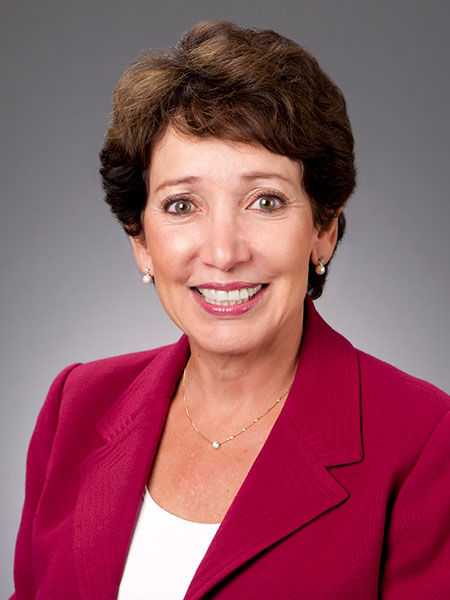
Women Firsts in San Diego
Irma Elsa Gonzalez
First female Mexican American federal judge
Irma Elsa Gonzalez has been a first three times over in the legal world. She was the first Hispanic magistrate judge to be appointed to the US District Court for the Southern District of California, and the first Hispanic woman appointed to the San Diego Superior Court. When former President George H. W. Bush nominated her to our US District Court in 1992 (and called her directly at work to deliver the news that she was confirmed by the Senate), she became the first Mexican American woman to serve as a federal judge. That year, there were only 35 federal judges on the bench who were of Hispanic descent (1,007 judges were white).
“Positions of power were very rare for women in the legal market, and still are, especially for women of color,” she says. In fact, six district courts around the country have never had a female judge. “Things have changed, especially in California. On the federal side, it’s still lagging.
“We should be representing the community in which we live. So therefore, we are still behind in being appointed, especially on the bench.”
Gonzalez was chief judge of the court from 2005 until her retirement in 2013.
“I’m proud to be a ‘first.’ I’m very proud of my heritage. Maybe I was a token—the token woman or the token Mexican American—but I think I’ve proved that I was competent and did a good job.” —MT
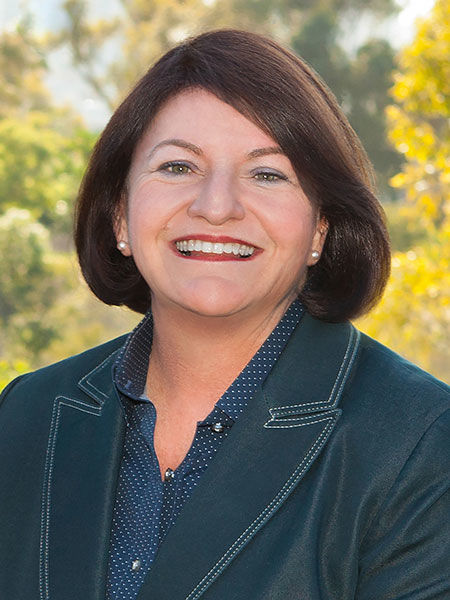
Women Firsts in San Diego
Toni Atkins
First woman—and first member of the LGBTQ community—to serve as California state Senate president pro tempore; first speaker of the state Assembly from San Diego
“I grew up in Appalachia in a blue-collar, working-class family. I saw my parents work harder than anyone else and still struggle. No health care, no sick days, no running water, sometimes no electricity. By the time I was able to get to college on a scholarship and Pell Grants, I had a lot of anger about life’s inequities. But one of my early mentors helped me understand that it was important to channel that anger into action.
“I’ve worked many jobs; as restaurant waitstaff, a dry cleaner, a hotel housekeeper, in a dress factory, a frame factory, pumping gas. In all that time, I never gave up on my dream to be a part of something bigger—something that could make quality of life better, easier, and fairer for people like my parents and all those wonderful working people I shared jobs with.
“Given my humble beginnings, and as a woman and a member of the LGBTQ community, to be the only individual in the 169 years of California history to have led both the Assembly and the Senate means that the California dream—the American dream—is real.”
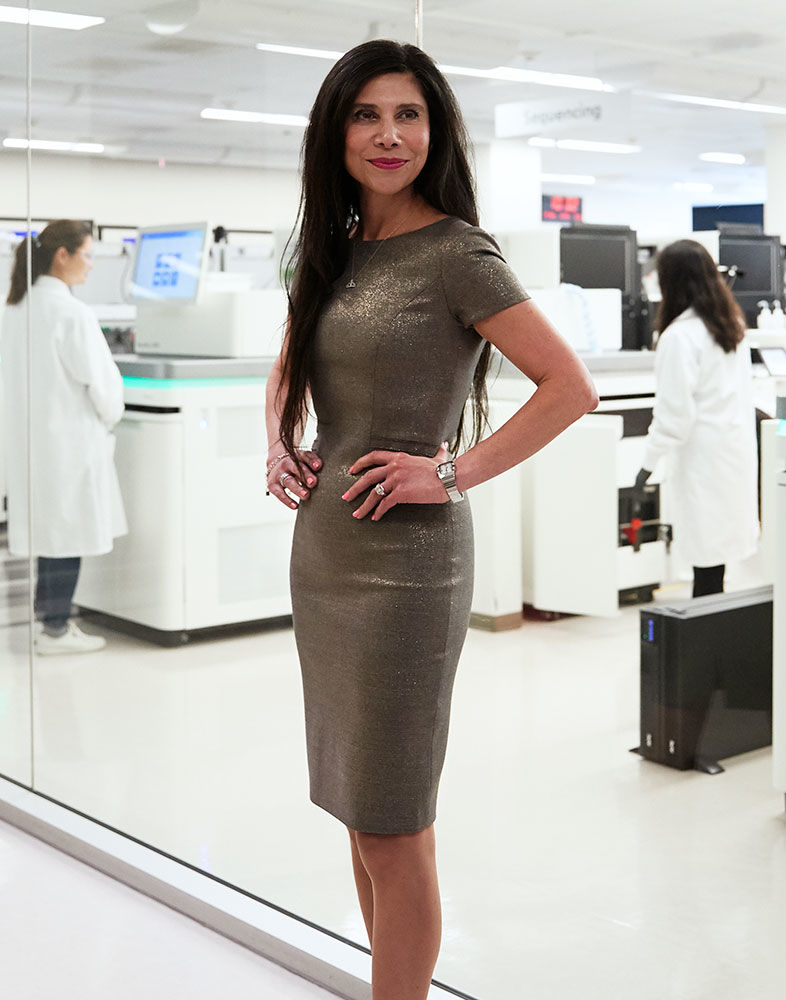
Women Firsts in San Diego
Photo by Nate Hoffman
Susan Tousi
First San Diego woman to lead product development at a $47 billion company
Last year, Susan Tousi received one of the nation’s highest honors for an engineer: She was inducted into the National Academy of Engineering. Jeff Bezos was in her class of 83 members, 19 of whom were women.
The chatter at the induction was all about attracting girls to STEM. “Girls are inspired by wanting to help people, wanting to change the world, to make lives better for their friends, their families, their loved ones—they’re not inspired by power or blowing things up,” Tousi says. “We need to talk about engineering and STEM differently.”
Tousi, who is Illumina’s senior vice president of product development, never considered engineering until a teacher took her aside. “That was the ‘aha!’ moment for me, that science and engineering could make lives better, which is why Illumina really resonates with me. Our entire mission is about improving human health by unlocking the power of the genome.”
Today, Tousi is a trustee of La Jolla Playhouse and an advisory council member for the Fleet Science Center. She also mentors women.
“I run a Lean In Circle with our top women across R&D at Illumina. What surprises me the most is that they still have a confidence issue, compared to a lot of their male peers.
“In meetings, I look around the room for other women who I know have something to offer on a subject, and I make an opportunity for them to speak. A lot of times, when they say something, it’s brushed over until a male counterpart says it later in the meeting, and I’ll point out, ‘That’s exactly what so-and-so said earlier. I’m so glad we got the point now.’” —EMG
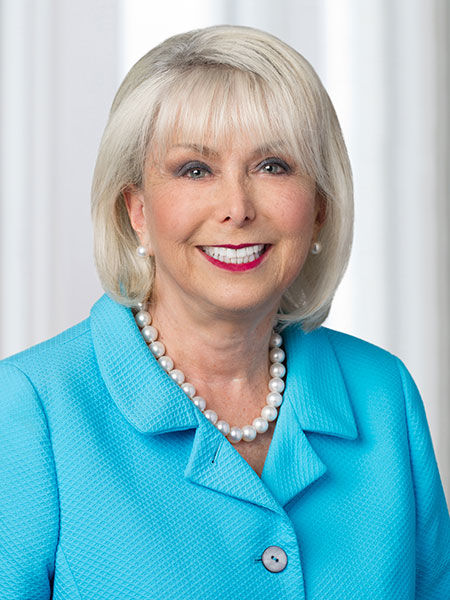
Women Firsts in San Diego
Lynn Schenk
First woman elected to Congress south of Los Angeles
As a young law student at the University of San Diego in the late 1960s, Lynn Schenk learned quickly that she wasn’t welcome in the male-dominated field. “My property professor said to me, ‘Miss Schenk, what are you doing in this class, taking up the space of a man? Why don’t you go learn to fix a toaster or a dishwasher, so later in life you can save your husband money and fix these things yourself?’”
“All of that just makes you more resilient,” she says. The daughter of a Holocaust survivor, Schenk tirelessly battled for equal rights throughout her career. In the 1970s, she founded the Women’s Bank to help women gain financial independence from men. “If you wanted to have a little business, you needed to have a line of credit from the bank,” she says. “But you could not get it without a male cosigner. So a group of us said, well, the heck with them!”
In the ’80s, she became the first woman to hold the position of secretary of the California Business, Transportation and Housing Agency. And in the ’90s, she became the first woman elected to Congress south of Los Angeles, as well as the first woman to be chief of staff to a California governor (Gray Davis). One thing she’s especially proud of: “When I had the opportunity to hire bright women, I always did.”
Another proud achievement was the time in 1971 when she and two female friends (including Justice Judith McConnell) demanded to be seated at the Grant Grill in downtown San Diego, where a sign declared “Men Only” from noon to three. When the maître d’ finally escorted them to a table, the men in the dining room booed. “You can put up with a lot,” she says, “but ridicule, derisive laughter, booing—that hurts.” As further proof of her grit, she returned three more times, until the sign finally came down. —AA
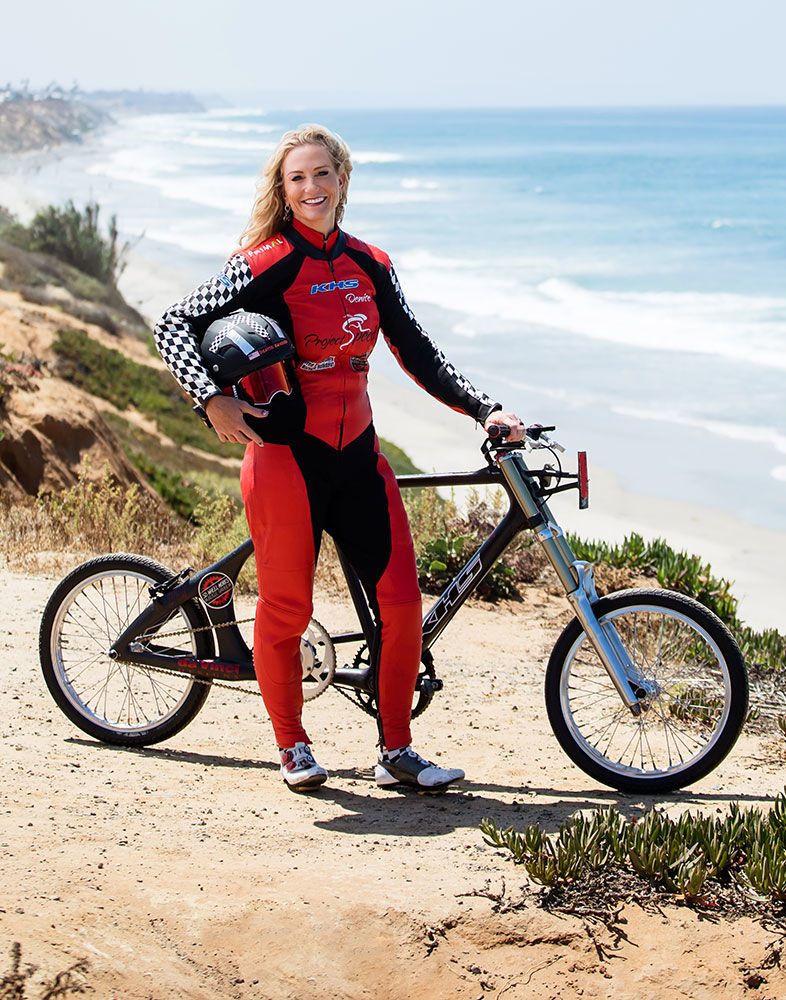
Women Firsts in San Diego
Photo by Jenny Siegwart
Denise Mueller-Korenek
First person to surpass 167 mph on a bicycle
Ask Denise Mueller-Korenek, who set the record last year for the world’s fastest person on a paced bicycle, what it feels like to go 183.9 miles per hour on a bike behind a roaring dragster, and it’s difficult for her to recall. “I am so hyper-focused at that speed because things are happening so quickly,” she says.
That feat, which she accomplished last September at the Bonneville Salt Flats in Utah, seems all the more impressive when you learn that Mueller-Korenek, a mother of three grown sons, was 45 when she did it.
After a successful career as a junior cyclist, she quit racing at age 19 to join the family business, Rancho Santa Fe Security Systems, of which she is now the CEO. Then, in 2012, her former coach convinced her to participate in the Million Dollar Challenge, a 620-mile bike ride from Palo Alto to San Diego for the Challenged Athletes Foundation. “My coach saw there was something still there—that spark,” she says. Upon learning that no woman had ever attempted to break the paced bicycle land speed record of 167 miles per hour, she began four intense years of training. In 2016, she set the record of 147.7 miles per hour for women, and then returned in 2018 for what she calls “a death-defying ride” to break the men’s record.
“I’m an adrenaline junkie,” says Mueller-Korenek, whose own mother jumped out of an airplane at age 84. “I didn’t even think about any potential issues with safety.”
This month, she’s headed to Nevada to see if she can beat the women’s speed record of 75.69 miles per hour on an unpaced bicycle (which means there will be no motor-pacing car in front to shield her from the wind). What makes her so courageous? “You just go. If a man was able to do it and survive, I know I’m going to be able to do it.” —AA
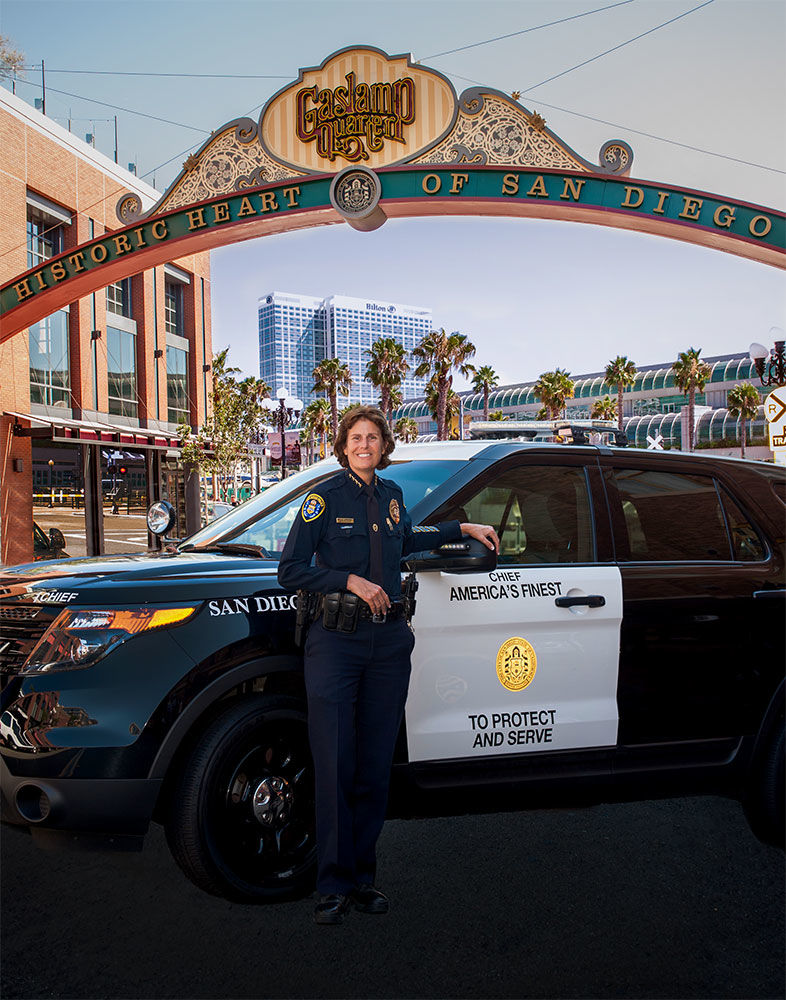
Women Firsts in San Diego
Shelley Zimmerman
First female police chief of San Diego
In 2014, when Shelley Zimmerman took over as the first female police chief of San Diego, the SDPD was in turmoil. Officers were leaving due to low pay and the department was in the news for a sexual misconduct scandal. To encourage change, Zimmerman put a sign on her desk: “Bad news welcomed here.”
“As a leader, never bite off the head that brings you the bad news,” she says. “They’ll never tell you another thing. Instead, welcome them, thank them for it, and then try to figure out how to make things better together.”
And fix things she did. Some of her many achievements include deploying body cameras for all officers (making San Diego the largest city at the time to do so) and successfully advocating for pay raises for the officers. In a study done by the FBI, San Diego was the safest big city in the country during her last full year as chief. But don’t try to give her all the credit. “We did it together,” the 35-year department veteran insists.
Zimmerman, who had to leave the agency in 2018 due to a retirement plan she signed up for a year before becoming chief, says one of the things she enjoyed most was being a role model for girls. “I’ll tell you, probably more fathers than mothers would come up to me with their young daughters and say, ‘Honey, this is the chief of police. It just goes to prove you can do anything you want in the world.’ And then I would add, ‘Yes, you can—but you’ve got to be willing to work hard.’” —AA
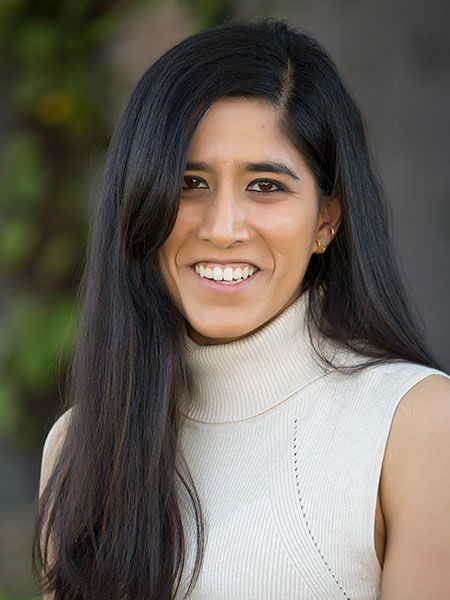
Women Firsts in San Diego
Priya Bhat-Patel
First Indian American City Council Member in San Diego County
When Priya Bhat-Patel announced her run for Carlsbad’s city council last year, the odds were against her. She was a 30-year-old health care consultant who identified as a progressive in a community that traditionally votes conservative. She was also earning her doctorate in public health.
Bhat-Patel ran the show by herself and didn’t hire staff or a manager until the last month of the campaign. Just two weeks before the election, she defended her dissertation on public policies regarding sugar-sweetened beverages.
Against those odds, she was elected—and became the first Indian American city council member in San Diego County.
In January, her colleagues designated her mayor pro tempore and elected her to the North County Transit District board of directors.
Bhat-Patel, who grew up in Carlsbad as the daughter of immigrant parents from India, says her election is indicative of how the coastal city is changing.
“Being South Asian, and an Asian American in general, and a woman, to have broken that barrier… I’m super excited to represent a diverse point of view—and a different one than other politicians may have.
“So many people told me during this run that I couldn’t do it. I hope that me being elected brings to light that if there isn’t a seat at the table for you, you can create that space.” —MT
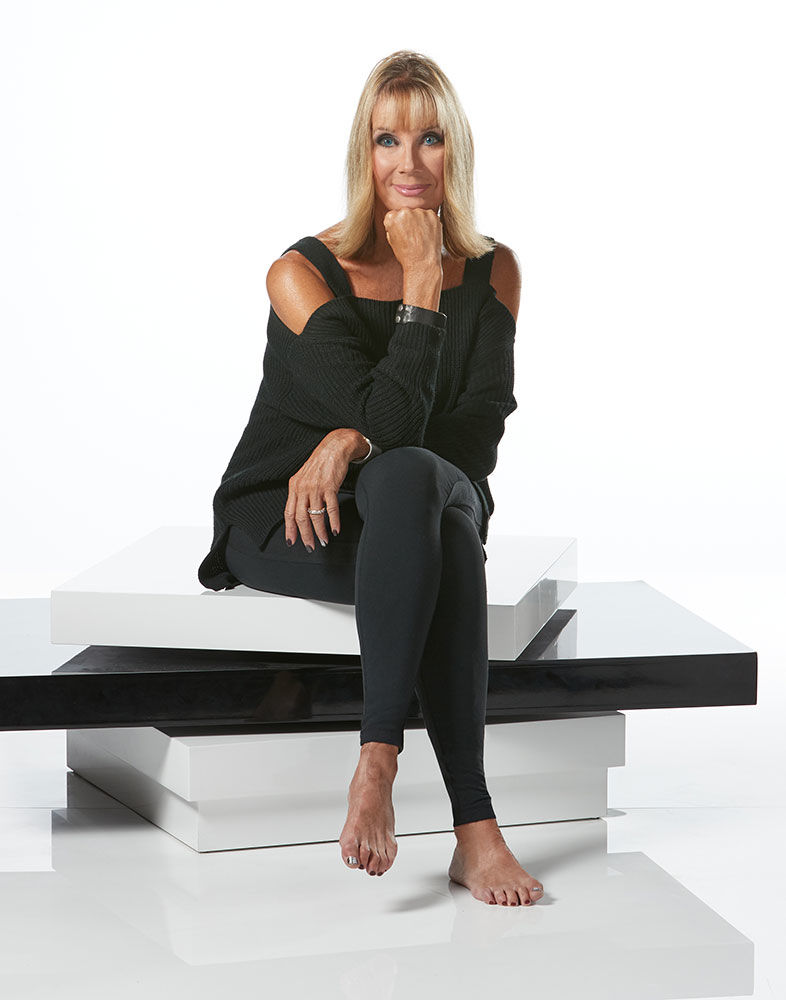
Women Firsts in San Diego
Judi Sheppard Missett
First female founder and CEO of a $100 million global fitness franchise
“I was dancing professionally and teaching at Gus Giordano Jazz Dance Chicago [before moving to San Diego in 1971]. I noticed that during children’s classes, the moms would hang out in the studio. I decided to offer a class to the moms. People came to class at first, but attendance dropped kind of quickly. Sucking up my pride, I called a couple of the ladies and asked why they didn’t come back. They said things like, ‘Well, your class is too hard!’ and ‘I don’t want to be a professional dancer—I just want to look like one.’ After that, I turned the students away from the mirror and had them mirror me, so they could focus on having fun instead of doing every dance move perfectly. Ultimately, Jazzercise came from teaching a dance class that didn’t go very well at first, but it soon blossomed into something better—and bigger [8,500 franchises in 25 countries]—than I could have imagined.”
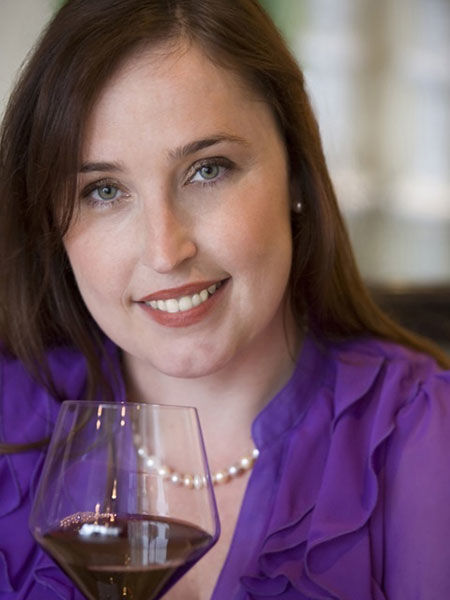
Women Firsts in San Diego
Megan Yelenosky
First woman Advanced Sommelier in San Diego
Megan Yelenosky doesn’t technically have a nose for wine—she has chronic sinusitis—but that’s never stopped her from becoming a sommelier, and an advanced one at that. The director of banquets at Hilton San Diego Bayfront originally went to culinary school, but a restaurant boss told her she talked too much and would never make it in the kitchen. “He was right. I am a social person. I struggled.”
He suggested she try a front-of-house position. And it was there, while managing Ajax Tavern in Aspen’s Little Nell Hotel, that she got her first exposure to good wines. Guests brought in beautiful vintages and let her taste them.
Yelenosky says it would have taken her years to see that kind of wine outside of an upscale restaurant—and even then, she never would’ve been able to go out and buy them—so being in her position was key. She never saw many female servers in fine dining restaurants, and believes this is why fewer women were studying wine.
In 2000, she moved from Aspen to San Diego with her husband, a La Jolla High alum. “At that point, San Diego wasn’t the culinary hot spot it is now, so you were a ‘shmanager’—a sommelier/manager. Addison hadn’t opened yet.”
Not only were salaried positions like sommelier or wine director a rare luxury, so were certifications. Court of Master Sommelier tests are an incredible mental feat—requiring memorization of not just facts, but smells and tastes. For example, in a blind tasting, candidates must identify the wine’s varietal, its origin, its quality level, and its vintage. The test also covers wine service, decanting, food pairing, and recommending and pricing bottles. And it’s not just wine; it’s Champagne, spirits, and—when she first started taking the advanced course—cigars.
She took the Advanced Sommelier Certificate test three times. You must pass all three portions in the same attempt—one year she didn’t pass theory; the next year it was tasting.
On May 1, 2009, she finally passed. “It was a relief, because the first time I failed at this test was the first time I failed at anything that I ever wanted.”
Not only was she the first woman in San Diego to earn the Advanced Sommelier Certificate, but there were years when she carried the most wine certifications from any organization, as well. She went on to attempt the Master’s test three times, but has since stopped to have children. “The test will always be there. You don’t get a do-over with your kids,” she says. “But now that my twins are five, I can start putting in the time to study.” Cheers to that. —EMG
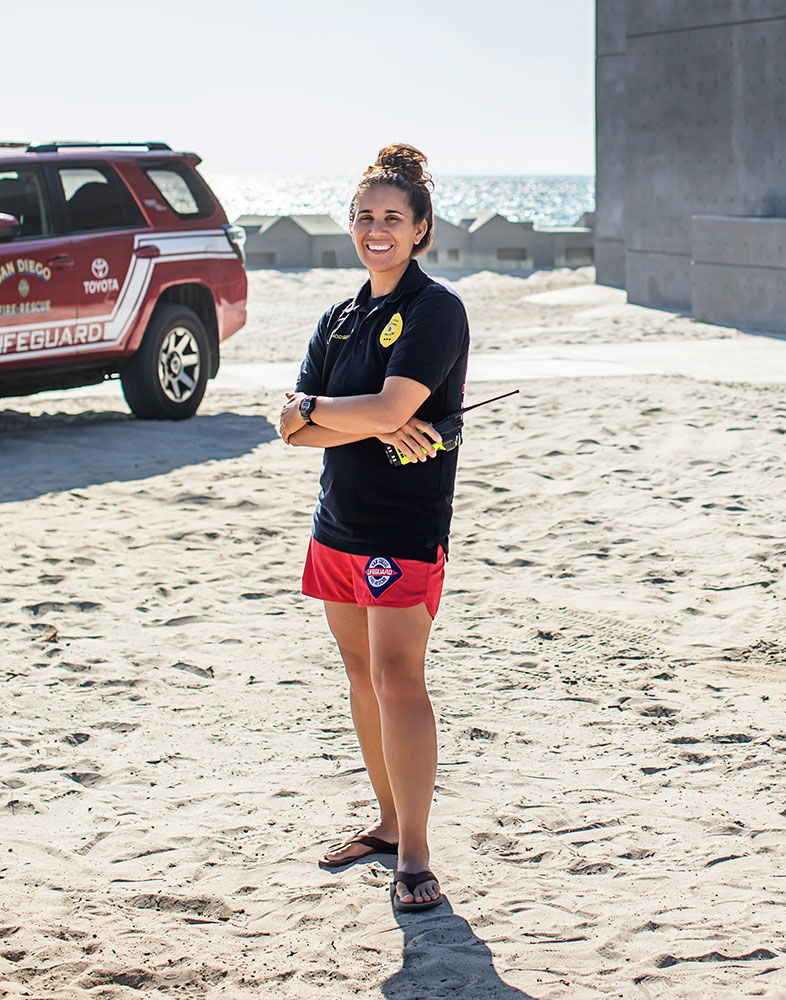
Women Firsts in San Diego
JENNIFERSIEGWART
Lt. Maureen Hodges
First woman marine safety lieutenant of San Diego
“I returned to lifeguarding in San Diego after having moved to Australia with my Australian husband. I’d been gone for four and a half years, so they had me go through the San Diego Advanced Academy [10-week formal training for lifeguards] again. I had a two-year-old son and was still breastfeeding my seven-month-old, so I’d have to pop out of the academy and go somewhere and pump twice a day. I was in the academy with a lot of people in their early to mid-20s. I was definitely in the minority, and I think a lot of them at first were like, ‘What are you doing? Breastfeeding? We don’t want to know about that. She said “breast.”’ But they were all very supportive, especially as I got to know them. It was definitely a huge challenge to go through the academy [after having a baby and moving from overseas six days prior to starting]. It was an El Niño year; the surf was giant every day and I was seven months postpartum. It was probably the hardest time in my personal life to do it, but I look back and think, If I can do that, I can do anything. And it shows other women that we can do this job and be moms.”
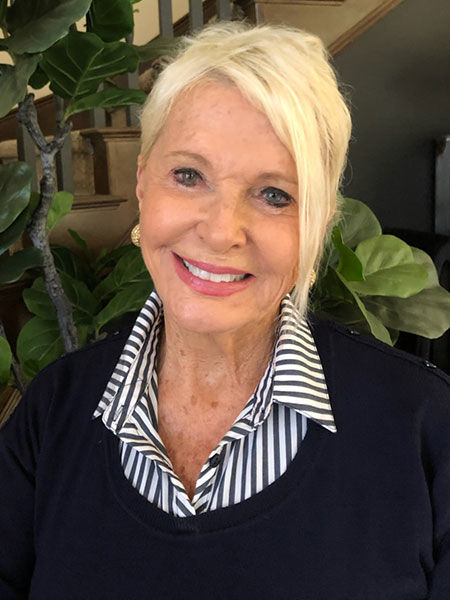
Women Firsts in San Diego
Toni Anderson
First person to be awarded back child support, 50 years after her divorce
Toni Anderson’s world was turned upside down the day her husband walked out on her and her two-year-old daughter. “He left me a stereo and $62,” she says. In 1970, a judge ordered him to pay child support until their daughter turned 21. After his first check to Anderson bounced, he fled to Canada with his girlfriend.
To make ends meet, Anderson worked long hours as an interior designer, “living paycheck to paycheck,” she says. “The worst thing was what it did to my daughter—because the children suffer. My daughter is 53 and she still suffers. She feels abandoned. He never did a thing—no birthday cards, no Christmas, nothing.”
Fast forward nearly 50 years later, and through a Google search, Anderson learned that her ex was living a seemingly successful life in Oregon. Because California has no statute of limitations on child support, Anderson had a case. “I was fearful,” she says. “I thought, no, no, I can’t go after him.” But she did, and won: The judge awarded her $150,000, which included back child support with interest. “He was so silly,” the 74-year-old Carlsbad resident says. “If he had paid when he was supposed to, it would have been only $39,000.” Her hope is that her success will empower other parents to fight for what they’re owed. “Take a stand for what’s rightfully yours,” she says. “And don’t be afraid.” —AA
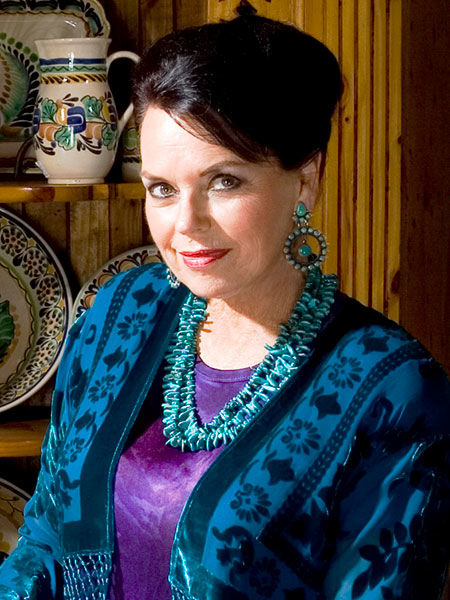
Women Firsts in San Diego
Photo by Ted Walton
Diane Powers
Founder of Old Town’s first Cinco de Mayo festival
When out-of-town friends visit San Diego for the first time, taking them for a stroll through Old Town’s Bazaar del Mundo and over to Casa Guadalajara for a fishbowl-size margarita is one of the de rigueur activities. You can thank Diane Powers for these memories, since she developed the marketplace back in 1971—it was once the most successful concession in the California State Park system—and fought to keep it alive even when she lost the lease at its original location in Old Town State Park in 2005. Powers is a restaurant maven, owning four iconic Mexican restaurants around the county (including the flagship Casa Guadalajara), but her biggest achievement may be the founding of Fiesta Old Town Cinco de Mayo over 30 years ago. It was the city’s first official celebration of the holiday, and today the event draws more than 100,000 people to the historic neighborhood.
PARTNER CONTENT
“The idea to open Bazaar del Mundo came to me after I had just gotten back from traveling through Mexico and Central America,” she says. “I saw an article in the newspaper that the state parks department was requesting concepts and presentations for a remodel of the old Casa de Pico motel and portions of the historic park in Old Town. Given my background and passion for Latin American culture, I went ahead and presented them with my vision to bring a marketplace, restaurant, and entertainment venue to Old Town. During this time, it was more common for men to own businesses than women. However, I was ambitious, I had a vision, I believed in myself—and it didn’t matter. —MT
